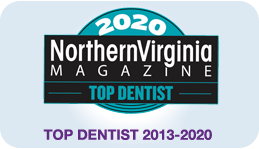A Pediatric Dentist is a specialist dedicated to the oral health of children and the monitoring of their facial growth and development. Dr. William’s office is designed for treating children from infancy through adolescence, as well as the medically and physically compromised children.
The American Academy of Pediatric Dentistry recommends that a child’s first visit to the dentist should occur by 12 months of age. This first visit will enable Dr. Williams or her associate to evaluate your child and introduce you to proper oral hygiene. Diet, fluoride, finger and pacifier habits and tooth eruption will be discussed to insure optimal oral health.
Though a balanced diet is certainly important in preventing cavities, experts agree that cavities are not only the result of what children eat, but also, how often they eat. Frequent snacking without brushing leaves food on the teeth longer and fosters tooth decay.
The American Academy of Pediatric Dentistry advises:
- Brush with a fluoride toothpaste twice a day.
- Floss children’s teeth once a day.
- Visit your pediatric or general dentist regularly.
- Get enough fluoride through drinking water, fluoride products and, when indicated, through fluoride supplements.
- Have sealants applied to the chewing surfaces of permanent back teeth or molars soon after they come in.
- Snack moderately—no more than twice a day
The chewing surface of children’s teeth are the most susceptible to cavities and least benefited from fluorides. Sealants are adhesive coatings that are applied to the tops of teeth and can be highly effective in preventing tooth decay. Studies show that 4 out of 5 cavities in children under age 15 develop on the biting surface of back molars. Molars commonly decay because plaque accumulates in the tiny grooves of the chewing surfaces. Sealants prevent the cavities that fluoride cannot effectively reach. As a preventive mechanism, sealants are an important part of a cavity-free generation. What are amalgams (silver fillings)?
Silver fillings or amalgams are used to restore or “fill” decayed areas in teeth. A tooth has five surfaces ( the chewing surface and four sides). The decay may involve any or all of these surfaces.
Composites or tooth colored fillings are used to restore front teeth for which cosmetic appearance is important. Tooth colored fillings are used to repair fractured teeth and/or areas of decay. The shade of the restoration material is matched as closely as possible to the color of the natural tooth. A tooth colored filling that covers the entire tooth is called a strip crown.
They are silver colored crowns used to restore teeth that are too badly decayed to hold fillings. Crowns with white facings can be used on front teeth.
This procedure consists of treating the infected portion of the nerve to avoid extracting the tooth.
A pulpectomy is necessary when the nerve (pulp) of the tooth is dead or abscessed. The entire infected pulp is removed from the roots of the tooth and medication is placed in the root canals.
Nitrous Oxide (laughing gas) is breathed by your child with oxygen during the restorative appointment. It is used to relax a mildly anxious child.
They are used when a baby tooth has been prematurely lost to hold space for the permanent tooth. If space is not maintained, teeth on either side of the extraction site can drift into the space and prevent the permanent tooth from erupting.
Primary teeth have been labeled “baby teeth”. However, the first tooth usually isn’t lost until 6 years of age and some primary molars must function until 12 or 13 years of age before they are replaced. Primary teeth are necessary for proper chewing, proper speech, the proper development of the jaws and for esthetics. Care of the primary teeth is important not only for proper function, but also to avoid a number of unpleasant conditions that result from their neglect.
Tips for helping children develop positive dental habits.
Start by setting an example
Make oral health a family effort
Show children that daily brushing and flossing, limited snacking and a regular dental checkup schedule are all part of a good dental hygiene program
Praise their efforts and their newfound independence when they are able to brush and floss on their own.
As the parent you are welcome to accompany your child into the treatment area during the initial exam. However, to better establish a trust with your child, we like to bring the children back by themselves. Expect your child to do well and enjoy their visit to our office and chances are they will do just that!



